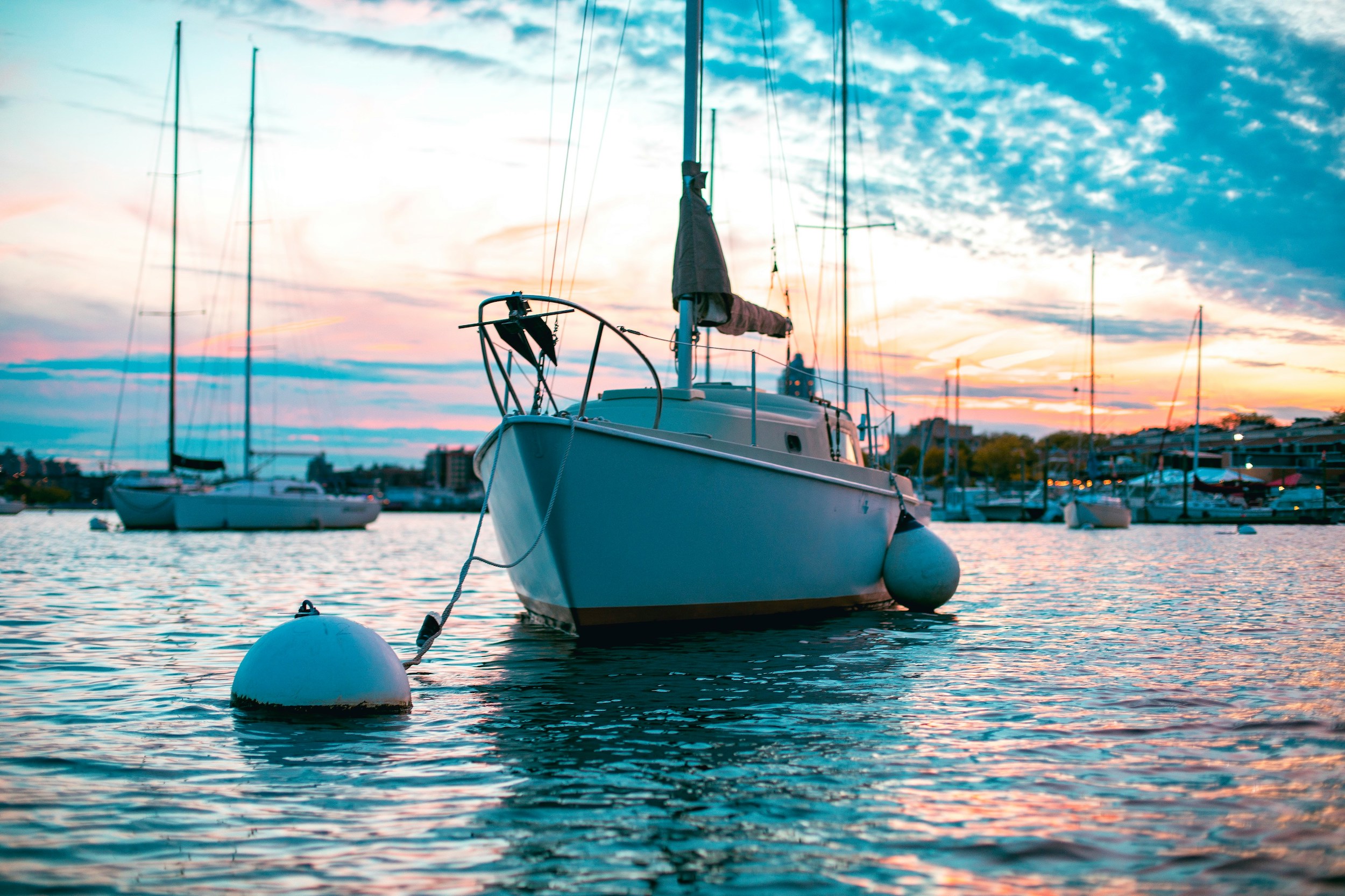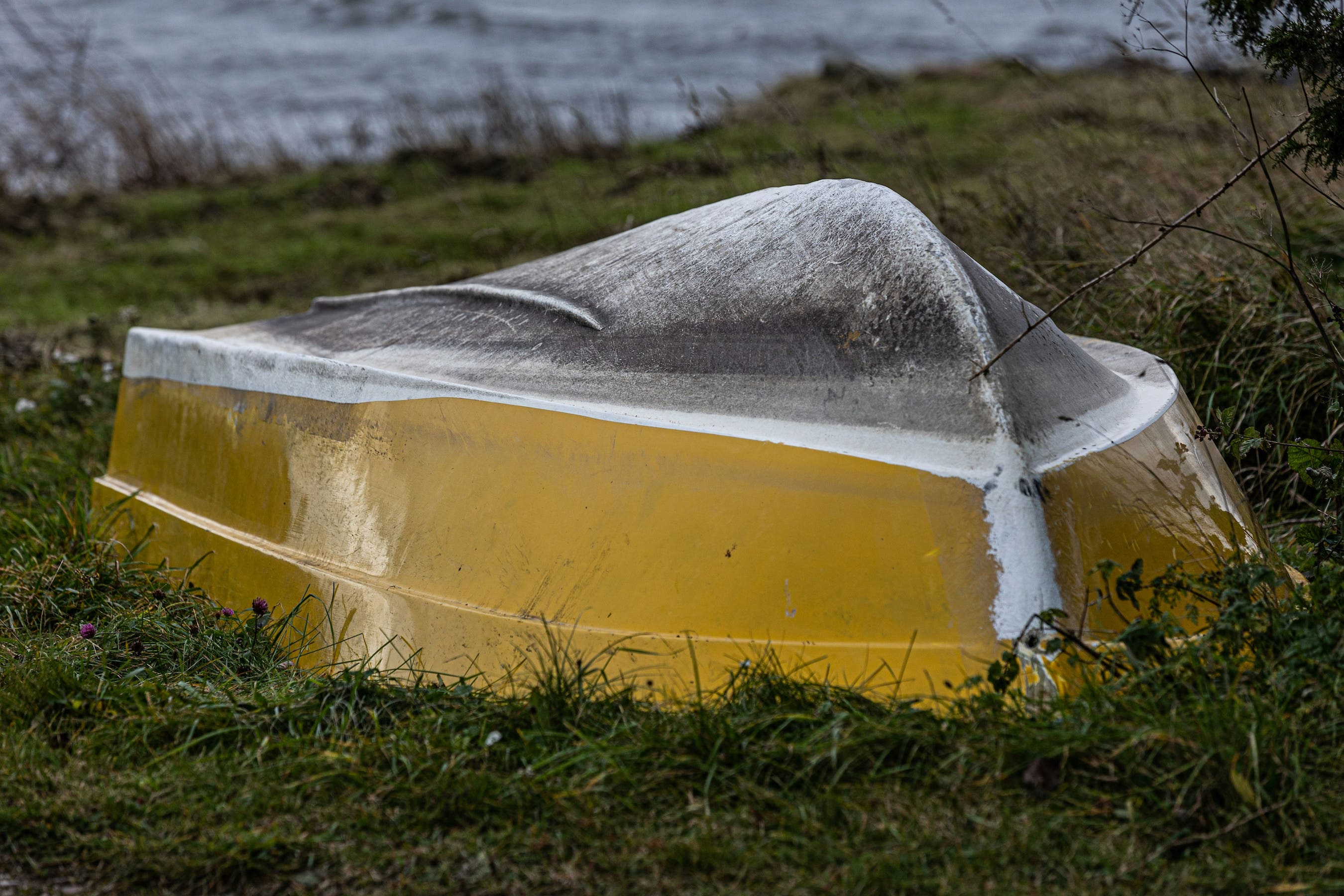Faced with the increasing saturation of marinas and the rise in mooring rates, many boaters are turning to alternative solutions to park their boats. This problem particularly affects the French coast where demand greatly exceeds the available supply, creating waiting lists of several years in the most popular ports. Mooring costs, which can reach several thousand euros per year depending on the size of the boat and location, also push owners to explore other options. Fortunately, several alternatives to traditional ports exist, ranging from fairgrounds to dry ports, including dead bodies and private pontoons. Each of these solutions has its own advantages and constraints, which should be carefully analyzed according to your needs, budget and type of navigation. This diversity of options offers boaters the possibility of finding a solution adapted to their particular situation.
Alternatives to ports: what are the options for mooring your boat?
1. The fairground
What is fairground?
Fairground anchoring consists in anchoring your boat in an authorized maritime area, using your own anchoring equipment. This ancestral practice allows you to park your boat temporarily or for a longer period of time without using port infrastructures. The boat then remains held in position thanks to its anchor and its chain, in areas generally located in the bay, in protected coves or off the coast.
Advantages: freedom, free, natural immersion
Fairground anchoring has the undeniable advantage of being free of charge, making it possible to save considerably on mooring costs. This solution also offers total freedom in choosing the location, subject to compliance with local regulations. Immersion in a preserved natural environment is another major asset, allowing you to take full advantage of direct contact with the sea and coastal landscapes. This proximity to nature creates a more authentic and contemplative sailing experience.
Disadvantages: safety, regulations, weather exposure
However, fairground anchoring exposes the boat to meteorological hazards, requiring constant monitoring and the ability to react quickly in the event of deterioration of conditions. Safety also raises questions, especially with regard to the risks of theft or vandalism, as the boat is less protected than in port. Strict regulations limit authorized areas and often impose maximum parking times. The absence of port services also complicates the refuelling and maintenance of the boat.
Tips for choosing the right place to anchor
The choice of a safe anchoring requires a thorough analysis of several criteria. The nature of the seabed must be compatible with the type of anchor used, preferring sandy or muddy bottoms that offer better stability. Protection against dominant winds and swells is an essential element in ensuring safety and comfort. It is also important to check the depth available at low tide and to make sure you have a sufficiently long anchoring. Consulting nautical charts and local nautical guides makes it possible to identify authorized areas and to know local specificities.
2. Dead bodies
Operation and installation
A deadbody is a permanent mooring system consisting of a ballast placed on the seabed, connected to a buoy on the surface by a chain or cable. This device allows boats to moor without using their own anchor, offering a more stable and reliable solution than traditional fairground anchoring. The installation of a dead body requires administrative authorization and must comply with strict technical standards to ensure its resistance to weather conditions.
Where can I find areas equipped with dead bodies?
Dead bodies are mainly found in organized anchorages, often located near ports or in protected bays. Local authorities, joint port unions or certain nautical associations manage this equipment. Nautical guides and harbour authorities can provide accurate information on their location and conditions of use. Some specialized mobile applications also reference these alternative docking points.
Average costs and regulations
Dead body prices vary considerably depending on the location and size of the boat, generally ranging between a few hundred and several thousand euros per year. However, these costs often remain lower than equivalent port rates. The regulations generally require a temporary authorization for the occupation of maritime public areas, issued by the State services. Award requirements may include local residency or seniority criteria in the application.
Maintenance and safety
The regular maintenance of the dead body is generally the responsibility of the user or manager, according to the terms of the contract. This maintenance includes checking the condition of the chains, the buoy and the ballast. The safety of the boat depends largely on the quality of the installation and its maintenance. The use of a surveillance device such as an Oria Marine IoT box can be particularly useful for remotely monitoring the condition of the boat and receiving alerts in the event of a problem.
3. Private or associative mooring buoys
Buoys managed by individuals or nautical associations
Private or associative mooring buoys are an interesting alternative to public installations. These devices are generally set up by local residents, local nautical associations or specialized companies. They often offer more personalized management and additional services such as surveillance or maintenance. Boating associations sometimes offer these buoys as a complement to their other activities, creating a real community of boaters.
How do I rent or buy a buoy?
The rental of a private buoy is generally done through direct contact with the owner or the managing association. The terms and conditions vary between providers, ranging from one-off rentals to full seasons. Some online platforms are beginning to reference these offers, facilitating the connection between buoy owners and boaters. The acquisition of a buoy requires obtaining the necessary administrative authorizations and compliance with local regulations.
Advantages: simplicity, low cost
These solutions have the advantage of administrative simplicity for the user, the procedures being generally taken care of by the manager. The costs are often attractive compared to port rates, while offering better safety than fairground anchorages. The close relationship with the manager often allows for flexibility in arrangements and better responsiveness in the event of a problem.
To be checked: authorizations and maintenance
However, it should be checked that the manager has the necessary authorizations for the operation of these buoys. The state of maintenance of the equipment must be evaluated regularly, as well as the maintenance procedures provided for in the contract. Responsibility for damage to the boat or to third parties must be clearly defined in the rental agreement. Appropriate insurance remains essential to cover the risks specific to this type of mooring.
4. Mooring on a private pontoon or at an individual's home
Rental or partnership with local residents
Mooring with a local individual is an increasingly popular solution, especially in areas where ports are saturated. This approach creates a direct relationship between the boat owner and the local resident, often based on a win-win agreement. The local resident can thus enhance his access to water while receiving additional income, while the boater benefits from a personalized mooring that is often less expensive than in port.
Networking platforms (e.g. DockSpot, Click&Boat)
Several digital platforms now facilitate the connection between owners of private pontoons and boaters looking for a mooring. These services work on the model of the collaborative economy, offering tools for booking, secure payment and mutual evaluation. They allow you to discover unusual locations that are often better located than traditional ports, while offering flexibility in rental periods.
Legal aspects and insurance
However, this practice raises important legal questions concerning the occupation of maritime public domain and the necessary authorizations. It is important to check that the owner of the pontoon has the legal rights to offer this service. Insurance aspects must be carefully considered, both for civil liability and for the coverage of possible damage. A written contract specifying the rights and obligations of each party is essential to avoid misunderstandings.
5. Dry ports
What is a dry port?
A dry port is a land-based facility for storing boats out of the water, usually on racks, cradles, or trailers. This revolutionary solution transforms the traditional design of mooring by offering secure parking on land, with launch on demand. Modern dry ports often use automated handling systems, allowing for quick and efficient launching.
Shore mooring: for what types of boats?
This solution is particularly suitable for small and medium-sized boats, generally up to 12 meters in length and a few tons. Motor boats adapt better to this formula than sailboats, due to their dimensions and ease of handling. Light boats such as semi-rigid boats, dayboats or small cabin-cruisers find in dry ports a solution that is perfectly adapted to their characteristics.
Advantages: safety, low maintenance, cost
Dry storage has significant safety benefits, as the boat is protected from theft, vandalism, and weather. This considerably reduces maintenance, as the hull is no longer in permanent contact with salt water and marine organisms. Maintenance costs are also decreasing, especially with regard to antifouling and sacrificial anodes. The pricing of dry ports is often competitive compared to traditional ports, especially considering maintenance savings.
Disadvantages: availability, access to the sea
The main limitation lies in the need to plan each trip to sea, as the launch is not immediate. This constraint can limit the spontaneity of outings and requires prior organization. The availability of places in dry ports also remains limited, as these facilities are still poorly developed on certain portions of the French coastline. Opening hours can be an additional constraint for navigators who want to leave early in the morning or return late in the evening.
Considerations to consider before choosing an alternative
Local regulations and permits
Each alternative mooring solution is part of a specific regulatory framework that must be fully mastered. French maritime regulations clearly distinguish between areas where anchoring is authorized, prohibited or regulated. Maritime prefectures issue orders specifying the conditions of use of each zone, including maximum parking times and periods of prohibition. It is essential to consult these official documents before any extended off-port docking.
Boat safety (anchor, flight, bad weather)
Security is the main concern when choosing a port alternative. Anchoring equipment must be sized according to the size of the boat and local conditions, preferring a sufficiently long chain and an anchor adapted to the type of bottom. Mechanical and electronic anti-theft systems are becoming increasingly important outside of monitored ports. Weather monitoring is becoming crucial, often requiring the installation of remote monitoring equipment to receive alerts in case of degraded conditions.
Accessibility (annex, parking, refueling)
The accessibility of the mooring site largely determines the practicality of the solution chosen. Owning an annex often becomes essential to reach land from a fairground or a dead body. Land parking options for the towing vehicle or equipment must be evaluated. The supply of fuel, fresh water and food requires special organization, as these services are not available as in a traditional port. The proximity of nautical shops for emergency repairs also deserves consideration.
Off-port insurance and coverage
Recreational insurance contracts often include specific clauses concerning off-port moorings. Some companies impose geographic or time restrictions to maintain coverage. It should be checked that the insurance policy actually covers the risks associated with the type of mooring chosen, especially in the event of a storm or collision. Deductibles may also vary depending on the mooring method, with some insurers considering fairground anchoring to be riskier than docking in port.
Best practices for mooring outside a port
The success of an off-port mooring is based on the respect of good practices proven by the experience of mariners. Weather verification is an essential prerequisite, including not only short-term forecasts but also the analysis of seasonal trends. Mooring equipment must be chosen carefully, using an anchor adapted to the type of bottom and a sufficient chain length, generally equal to five times the water depth. Fenders take on particular importance to protect the hull from friction against docks or other boats.
Boat signage is of crucial importance for the safety of navigation, especially at night. The installation of regulatory lights and radar reflectors ensures the visibility of the moored boat. Respect for the maritime environment requires the use of biodegradable products and the appropriate disposal of wastewater. Courtesy towards other users contributes to maintaining a serene climate in shared anchorages, avoiding conflicts and maintaining access to these areas for all.
FAQ: Alternatives to ports for mooring your boat
Is it legal to anchor your boat anywhere?
No, boat anchoring is strictly regulated by prefectural orders and local regulations. Some areas are forbidden to anchor for reasons of safety, environmental protection or maritime traffic. Other areas allow anchoring but limit its duration, generally to a few days or weeks. It is essential to consult official nautical charts and prefectural orders before any prolonged anchoring.
What is the difference between fairground and dead body?
Fairground anchorages use the anchor and the boat's chain to keep themselves in position, while the dead body is a fixed piece of equipment placed on the seabed, to which the boat connects directly. The deadbody generally offers better hold and avoids anchoring maneuvers, but requires specific authorization and regular maintenance. Fairground anchoring provides more freedom in choosing the location but is more exposed to weather hazards.
Can you live on your boat outside a port?
Living on board permanently outside a port raises complex legal questions. French regulations generally prohibit permanent residence on a boat at anchor, unless there are special exceptions. Practical aspects such as water supply, sewage disposal, and access to public services also complicate this option. Some communities offer specific solutions for river or maritime housing, but these devices remain limited.
What insurance covers boats out of port?
Most yachting insurance covers boats out of port, but with specific conditions. Some contracts exclude or limit coverage for extended fairground anchorages or areas considered dangerous. It is essential to check the terms of your contract and to inform your insurer of the type of mooring envisaged. Additional guarantees may be necessary to cover certain risks specific to alternative moorings.
Where can I find buoys or pontoons for rent near me?
Local harbour authorities are the first source of information to identify the buoys and pontoons available in a given area. Local nautical associations often offer these types of services to their members. Online platforms specializing in mooring rentals are growing rapidly, making it easy to search by geographic area. Nautical tourism offices can also refer to local providers offering these alternative solutions.
How to secure your boat outside the port?
Securing a boat out of port requires a multi-layered approach combining mechanical prevention and electronic surveillance. The installation of anti-theft systems such as propeller locks, alarms and geolocation devices deters theft attempts. A monitoring system such as the Oria Marine IoT box allows continuous monitoring and the sending of alerts in case of anomaly. Discretion in displaying valuable equipment and establishing relationships with local residents or other boaters also contribute to safety.
Conclusion
Alternatives to traditional ports offer boaters a range of diversified and often economical solutions for mooring their boat. From fairground anchorages to dry ports, through dead bodies and private pontoons, each option has specific characteristics that meet different needs. This diversity allows each sailor to find the solution best suited to his type of boat, his budget and his sailing habits.
The importance of being well informed about legal and practical aspects cannot be underestimated. French maritime regulations strictly regulate these practices, and non-compliance with the rules can lead to significant penalties. The consultation of official documents, the dialogue with the local authorities and the exchange of experiences with other boaters are essential steps before any change of mooring.
These alternative solutions generally represent a more economical and often freer option than traditional port mooring, but they require careful preparation and constant vigilance. The success of this approach is based on a good knowledge of technical, regulatory and practical constraints, as well as on the adoption of equipment and practices adapted to this new approach to boating.









